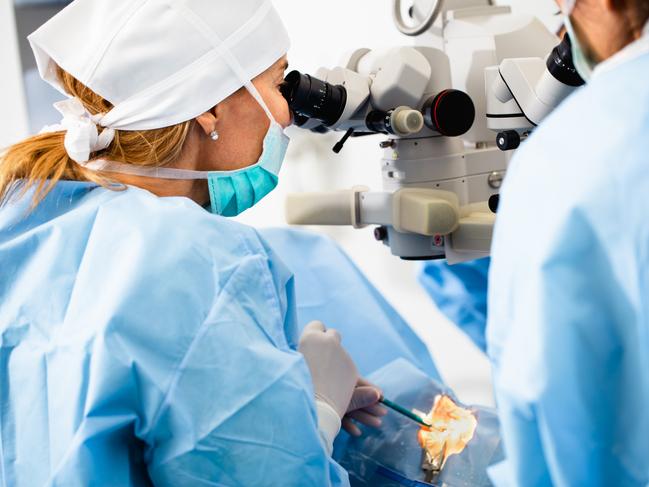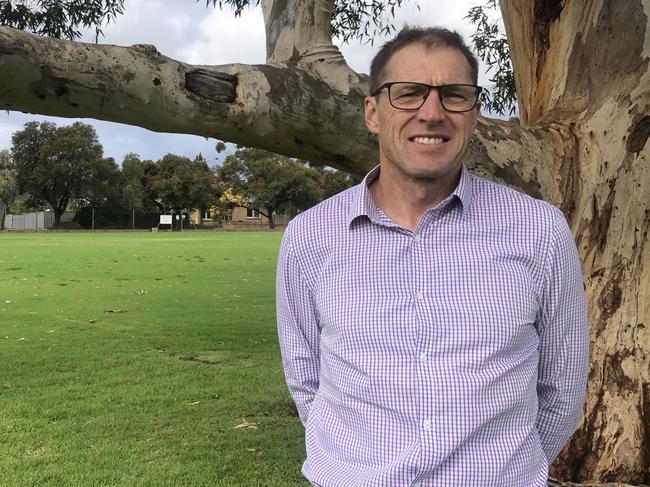Australian Commission on Safety and Quality in Healthcare reveals equipment left in patients
New data has revealed the number of Australians falling victim to medical mishaps per year, where surgical equipment is left in bodies during procedures. Here is how many have suffered.
Health
Don't miss out on the headlines from Health. Followed categories will be added to My News.
Surgical instruments accidentally left inside patients have not being discovered for six months and one went undetected for 18 months, new research has found.
About 30 patients a year are victims of medical mishaps where surgical equipment is not removed from their body and more than 400 have suffered from medical errors in the last five years.
Australian Commission on Safety and Quality in Healthcare tracks surgical mishaps which should never happen, like a baby being sent home with the wrong parents or operations on the wrong body part.

Its data shows there were around 60 of these sentinel events in Australian hospitals in 2016-17 down from just over 100 in 2012-13.
Nearly 400 patients were victims of these problems in the five years between 2013-14 and 2017-18, Australian Productivity Commission data shows.
Suicides in health facilities were the largest problem (139) followed by retained instruments (138), medication errors leading to death affected 67 patients, there were 35 maternal deaths and 13 cases where an operation was performed on the wrong patient or the wrong body part.
Three babies were sent home with the wrong parents.
MORE NEWS
Memes that sum up how we feel right now
Stars reveal sexy Met Gala outfits at home
Morrison calls on G20 leaders for virus review support
Macquarie University researcher Associate Professor Peter Hibbert, who specialises in adverse medical events, studied 31 investigations into retained surgical items between 2010 and 2015.
About two-thirds of the foreign objects left inside patients were sponges, drain tubes and a vascular device, he found.
There was also a surgical instrument (a curette used to scrape human tissue), a cochlear implant stainless steel template and guide-wires left inside patients, he told News Corp.
Incidents where foreign bodies are left inside patients are rare – across Australia there are about 30 incidents every year, Professor Hibbert said.

Professor Hibbert’s study looked at these events in Victorian hospitals where there were about six cases a year out of about 300,000 surgical procedures.
“It can be a distressing event for patients,” Professor Hibbert said.
“These foreign bodies can cause pain, loss of function and infections.”
The adverse events can also be expensive because all bar one of the victims needed another operation to remove the instrument which had been left inside them.
One in four of the surgical items were discovered on the day of the procedure but one in six took longer than six months to discover, the study published in the International Journal for Quality in Health Care found.

In one case a central venous catheter guide wire left inside a patient went undetected for 18 months.
Patients generally noticed something was wrong when they felt pain caused by the retained device pressing on a nerve, bowel obstructions, sepsis or serious infections, the paper said.
“The majority of incidents don’t occur because clinicians are doing the wrong thing, but because of the complex system in which they work,” Professor Hibbert, who trains doctors how to avoid these sorts of complications, said.
The types of surgery which saw equipment left inside patients included hip replacements, knee procedures, a procedure to remove part of the large intestine, a procedure to remove a voice box, a procedure to examine the abdomen, an emergency caesarean section and an episiotomy
X-rays detected some of the retained devices but did not pick up others.
The researchers said the best way of preventing these medical mishaps included managing the fatigue of medical staff, improved communication among members of the operating team, reducing noise and interruptions during surgery.
New sponges are now available which are designed to send off radio frequencies that can be detected by a scan of the patient before they are sewn up.
The study suggests improving the design of post-surgical drain tubes to make it harder for them to go undetected.
Originally published as Australian Commission on Safety and Quality in Healthcare reveals equipment left in patients
